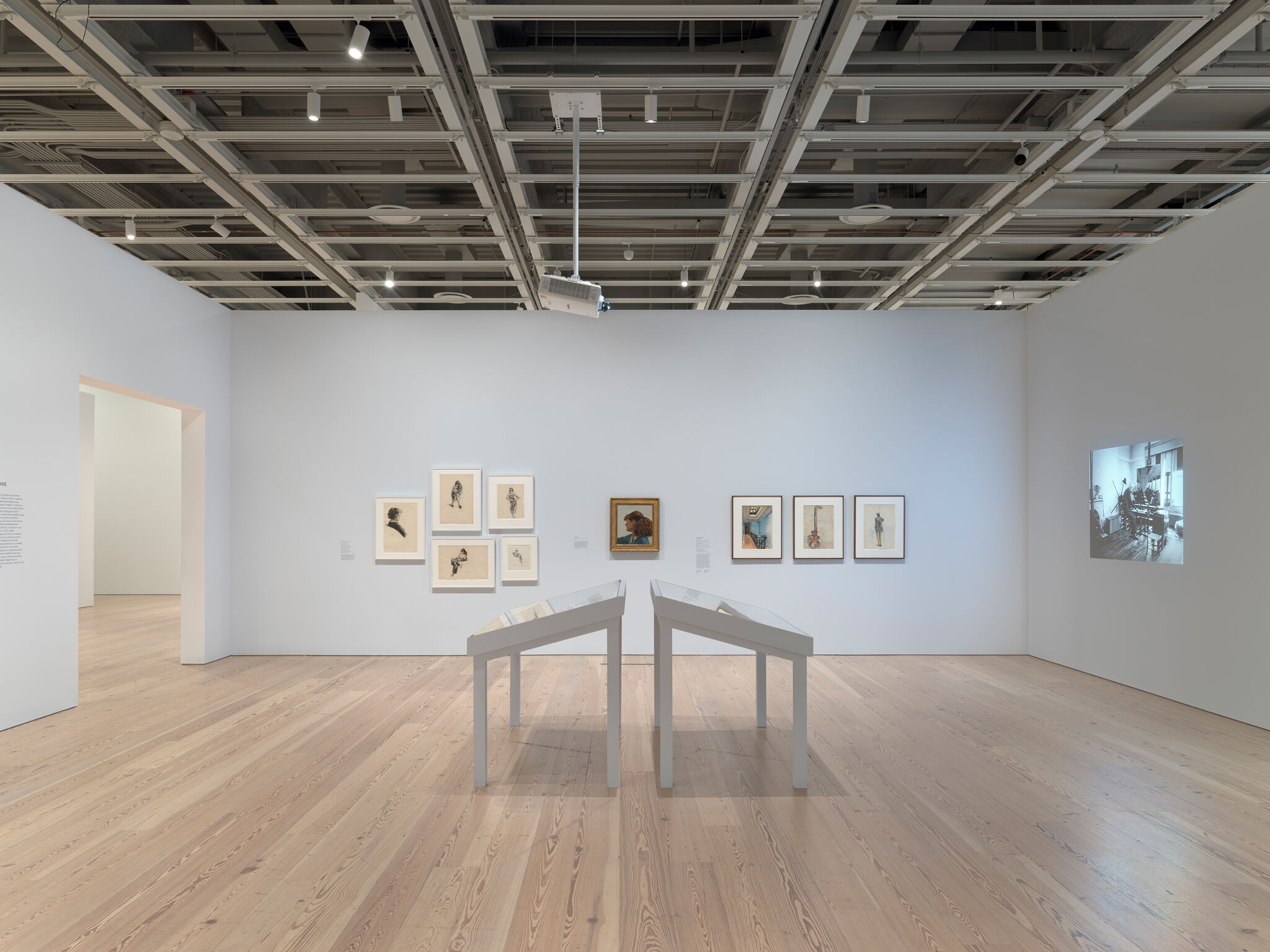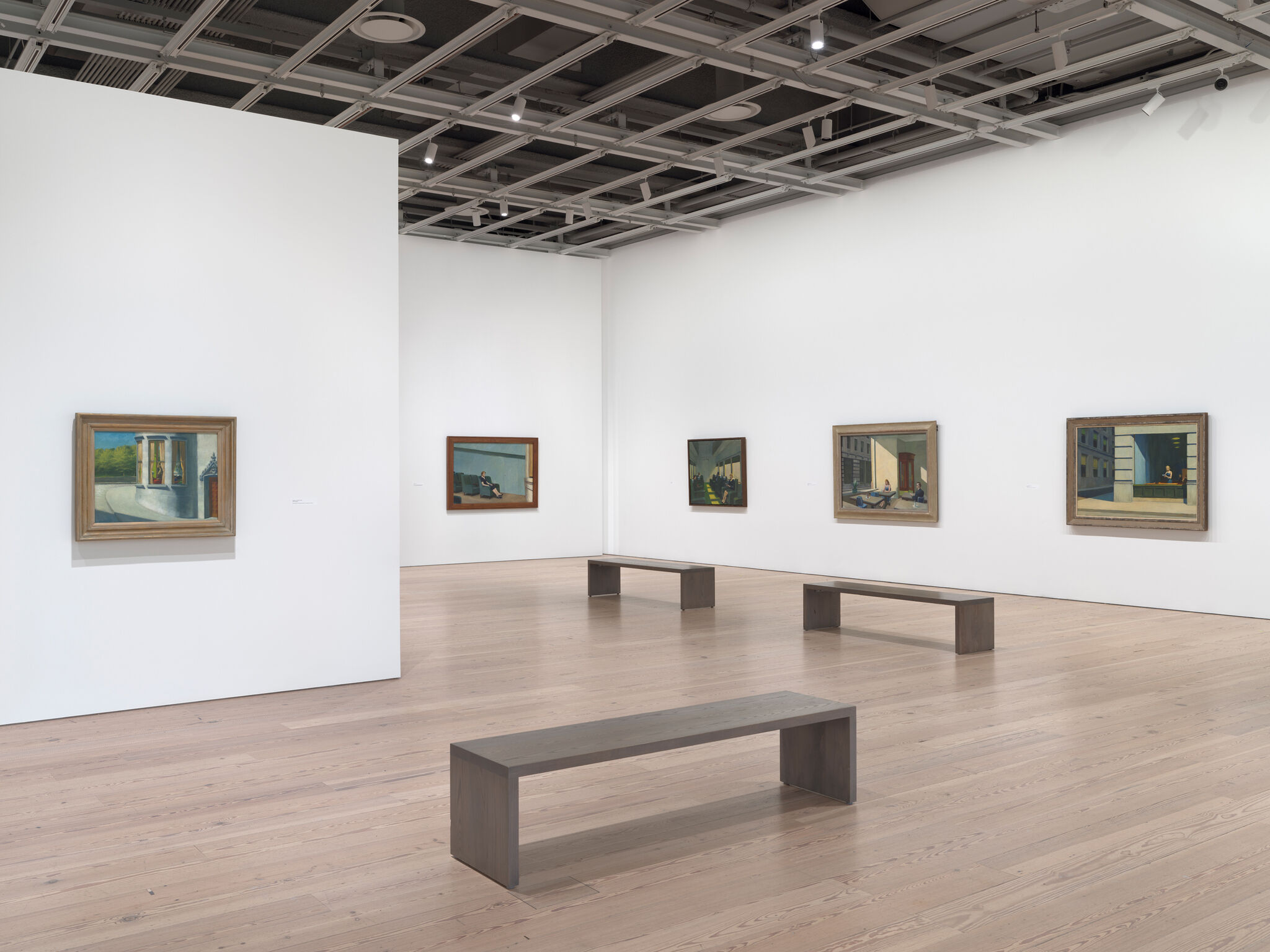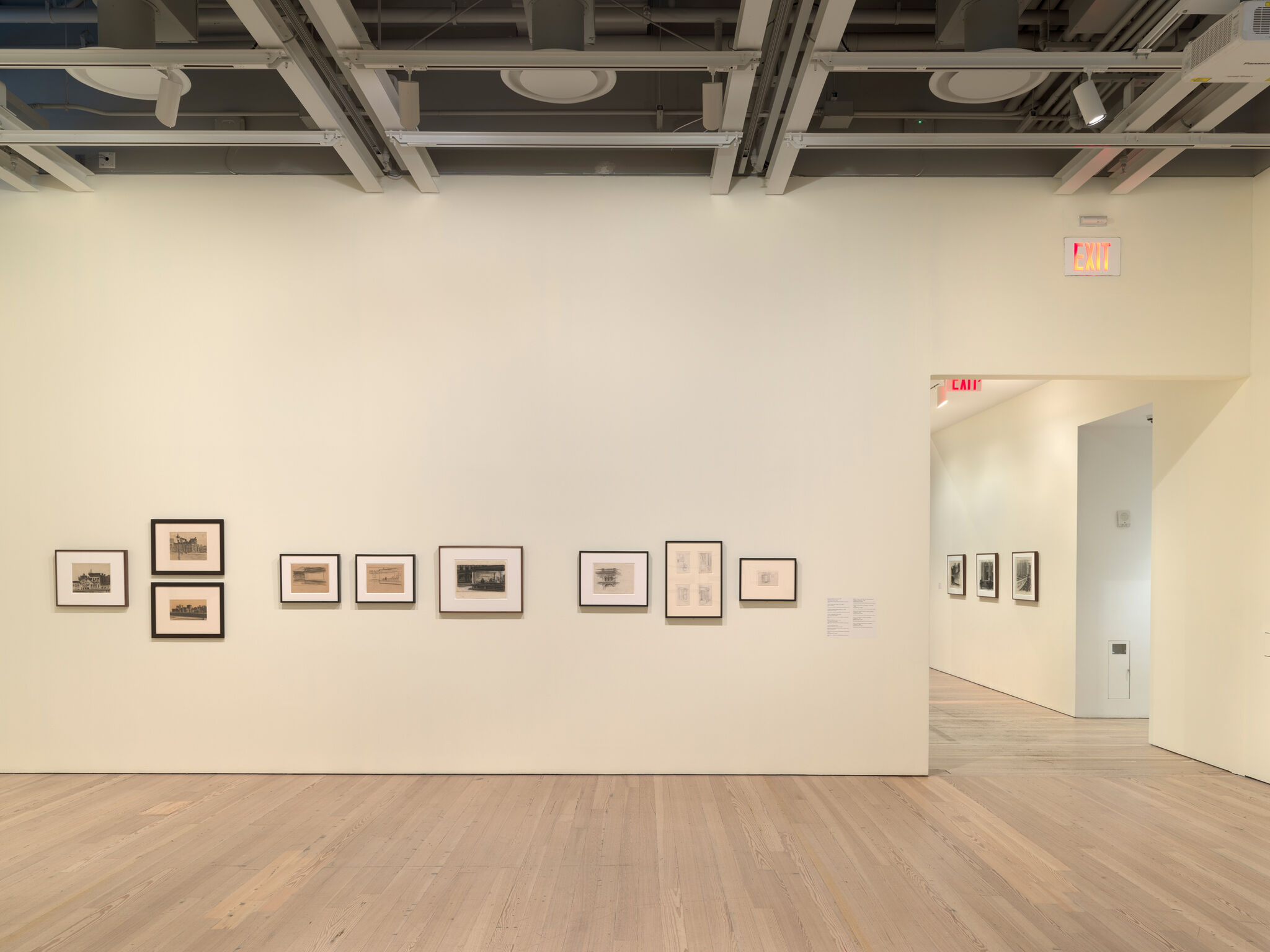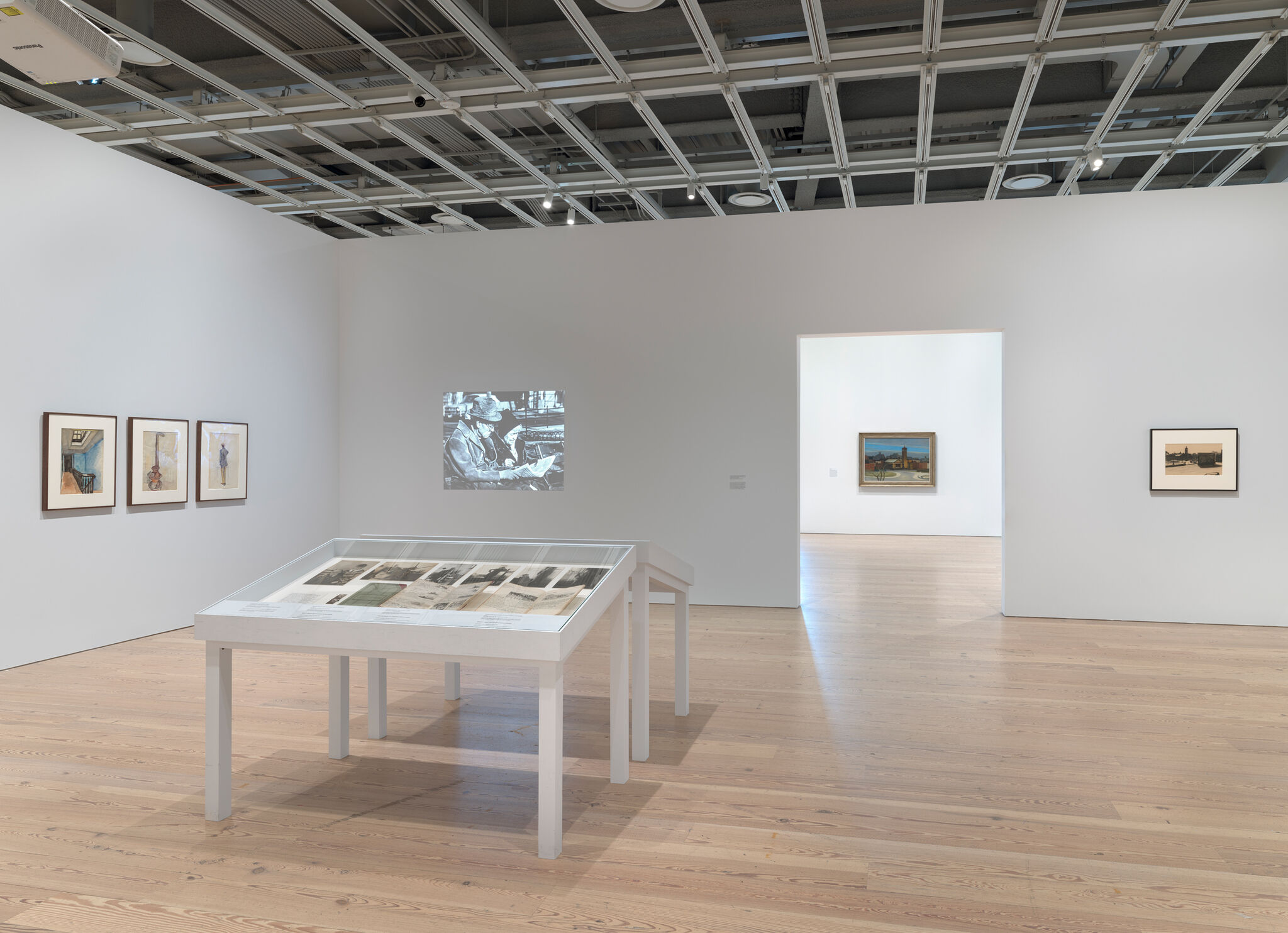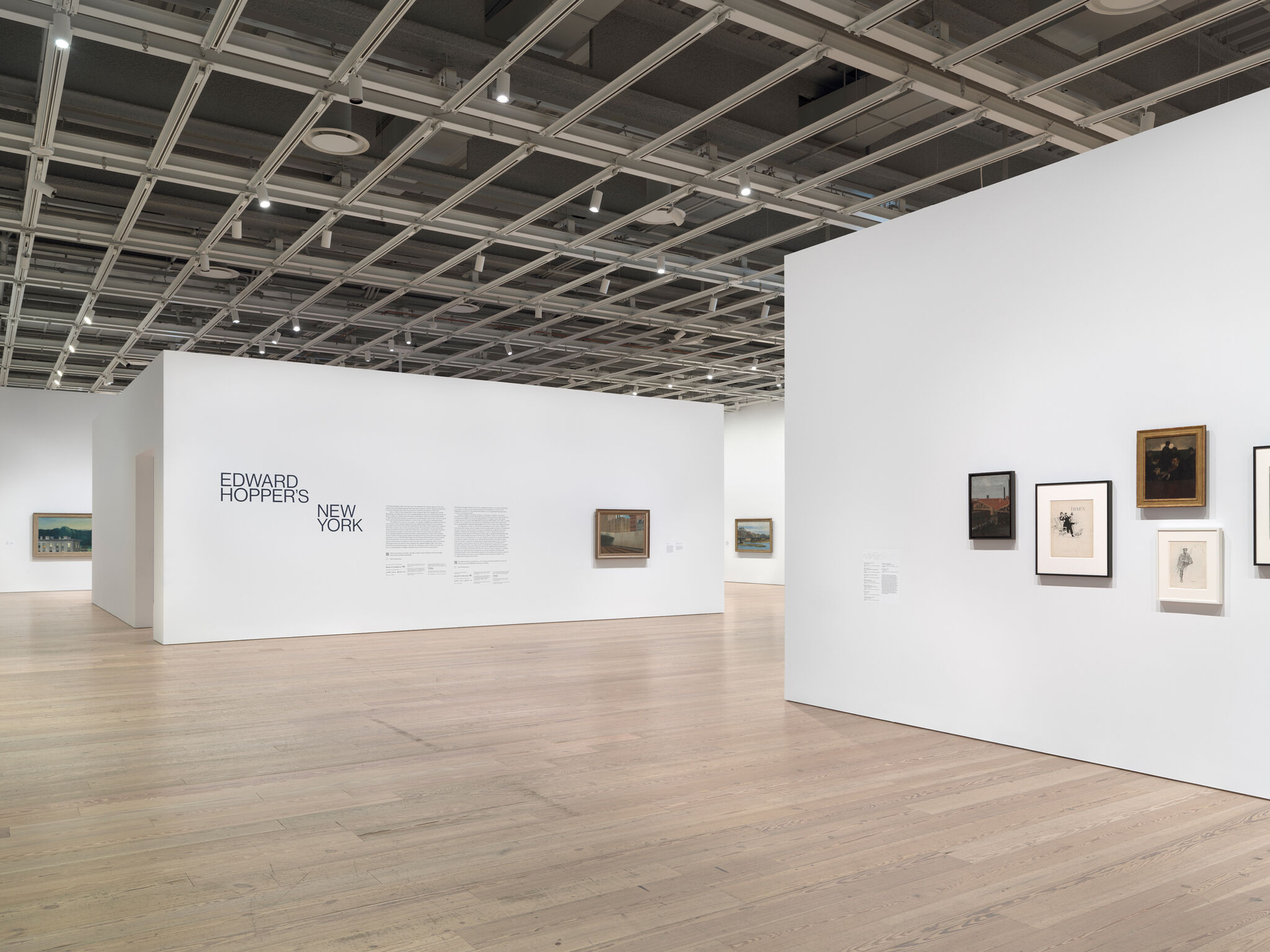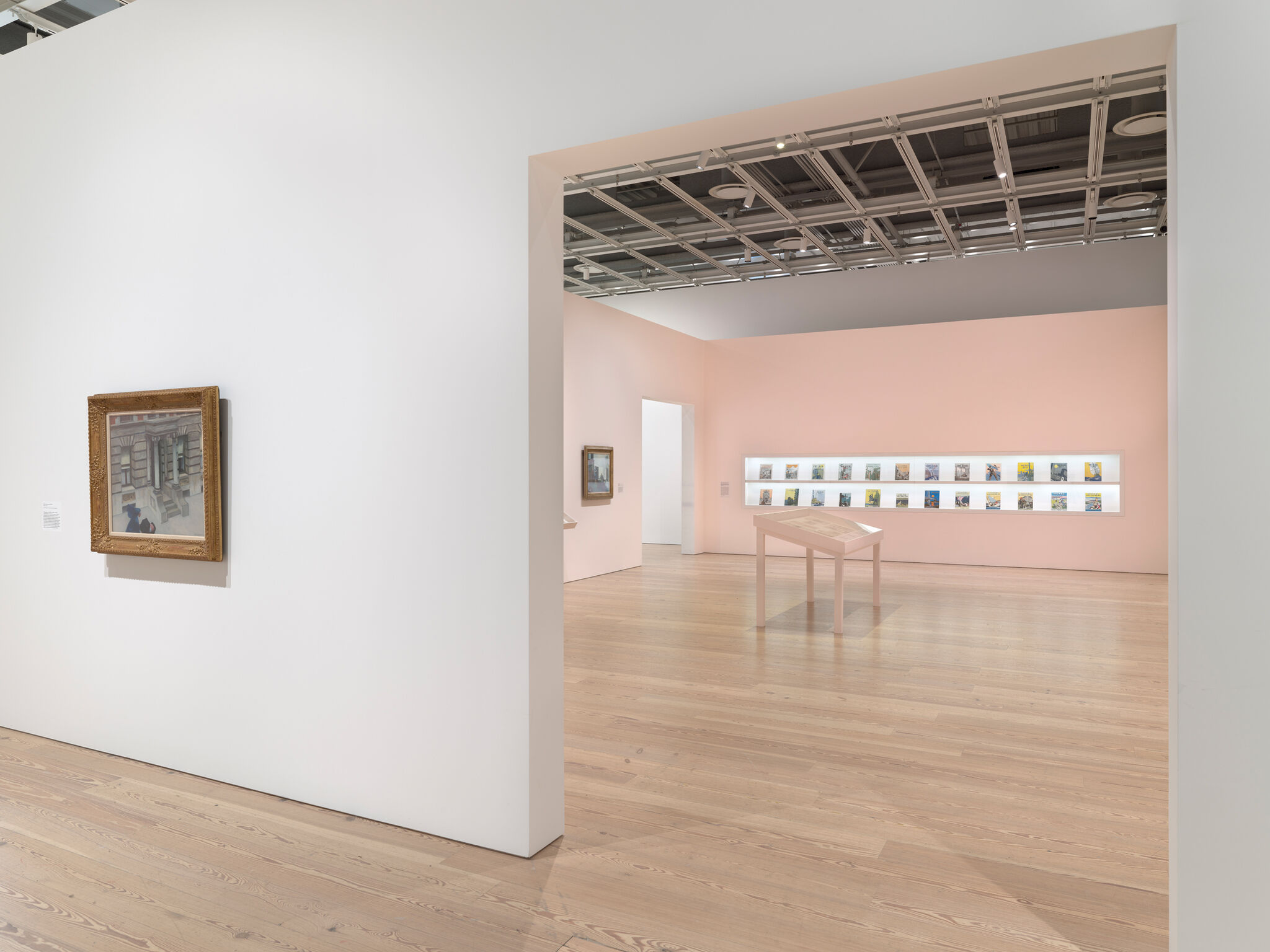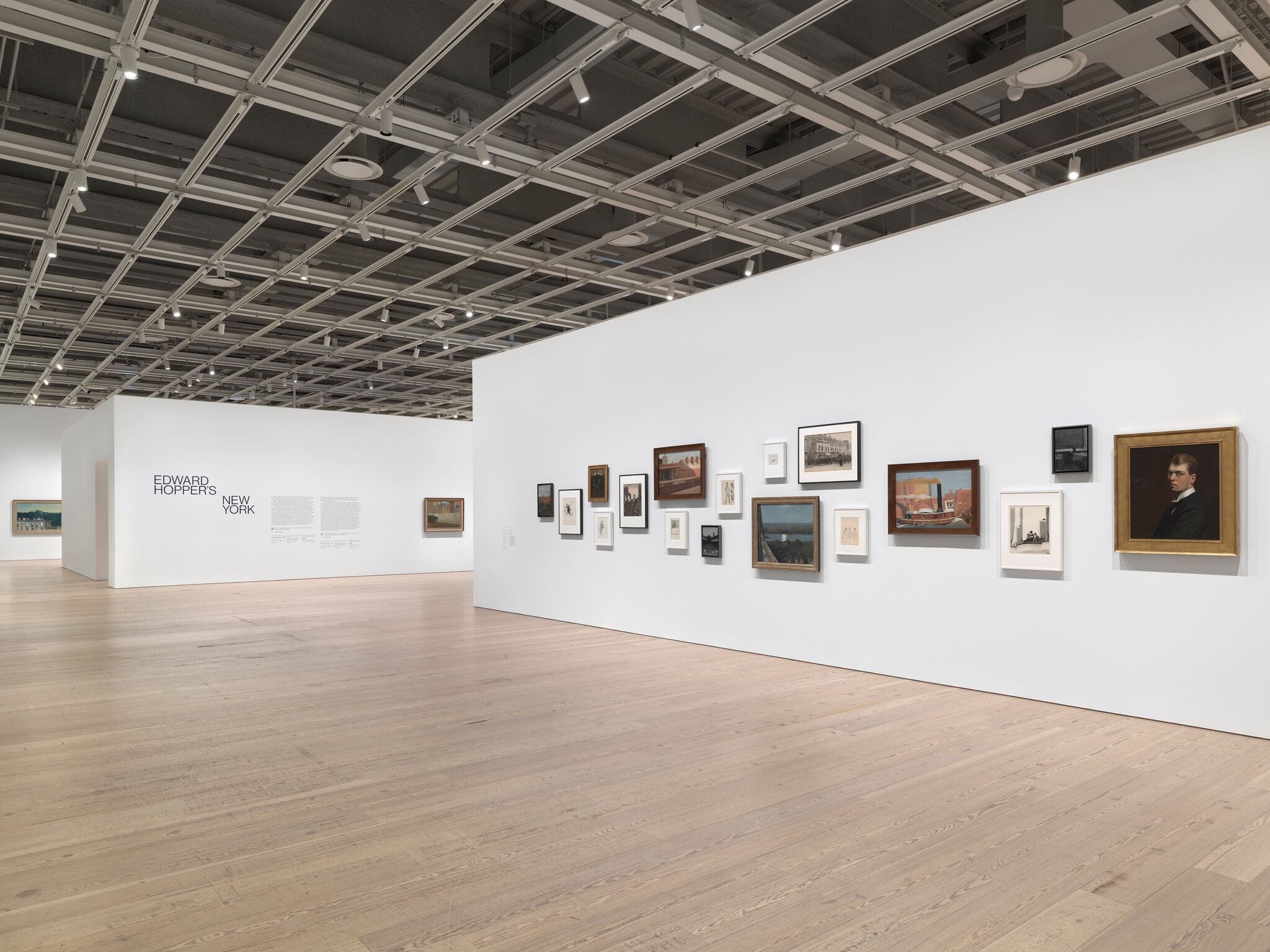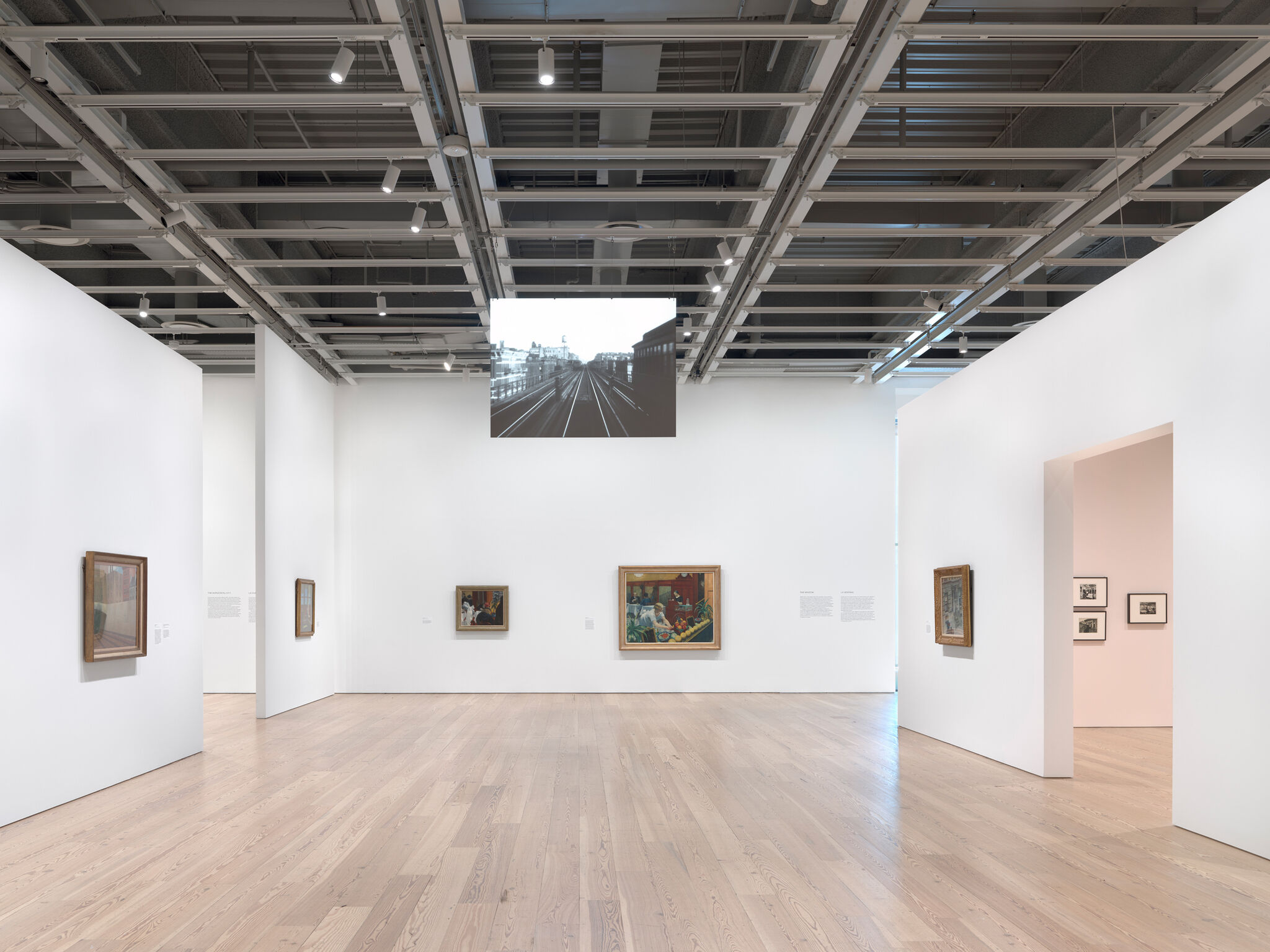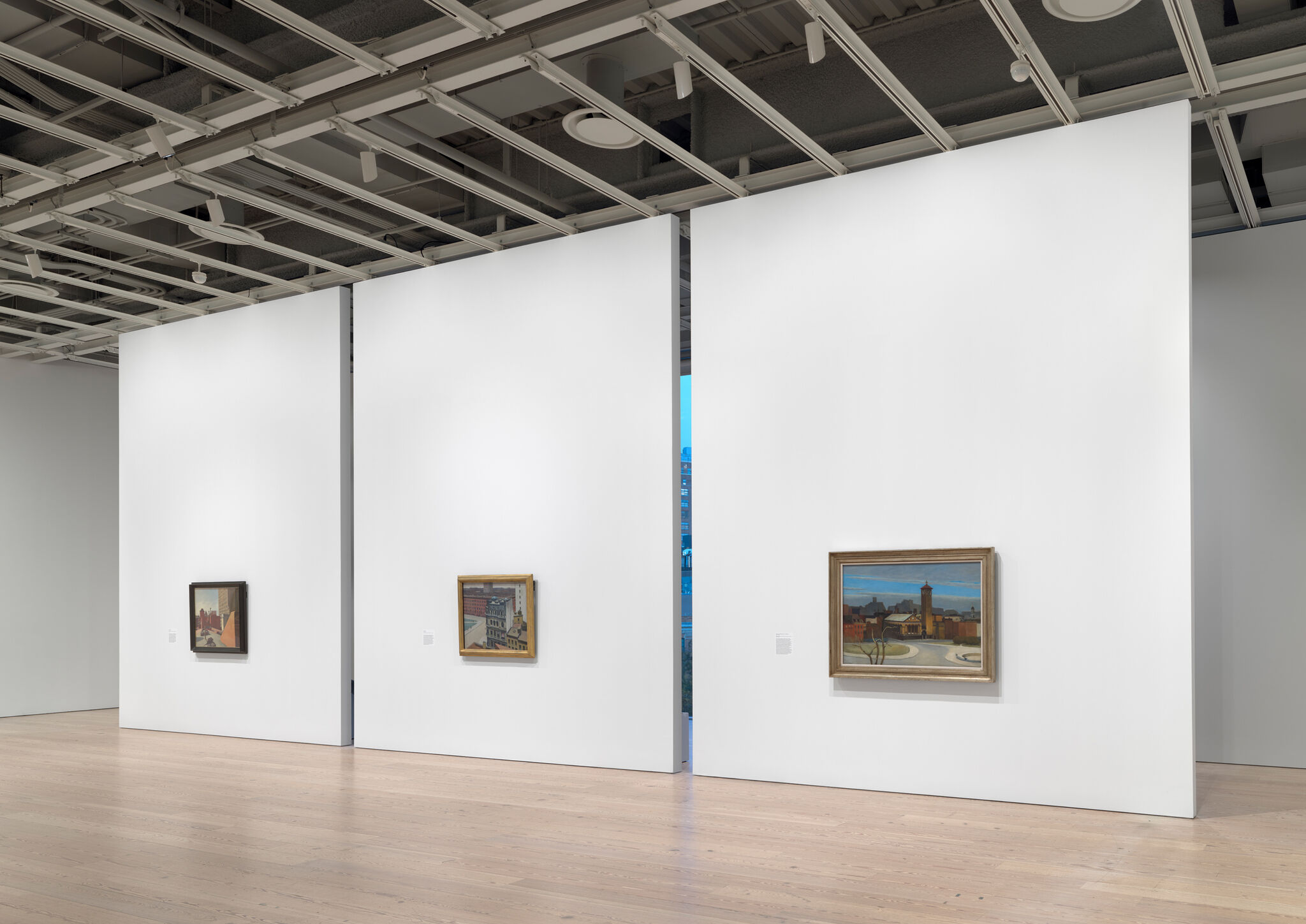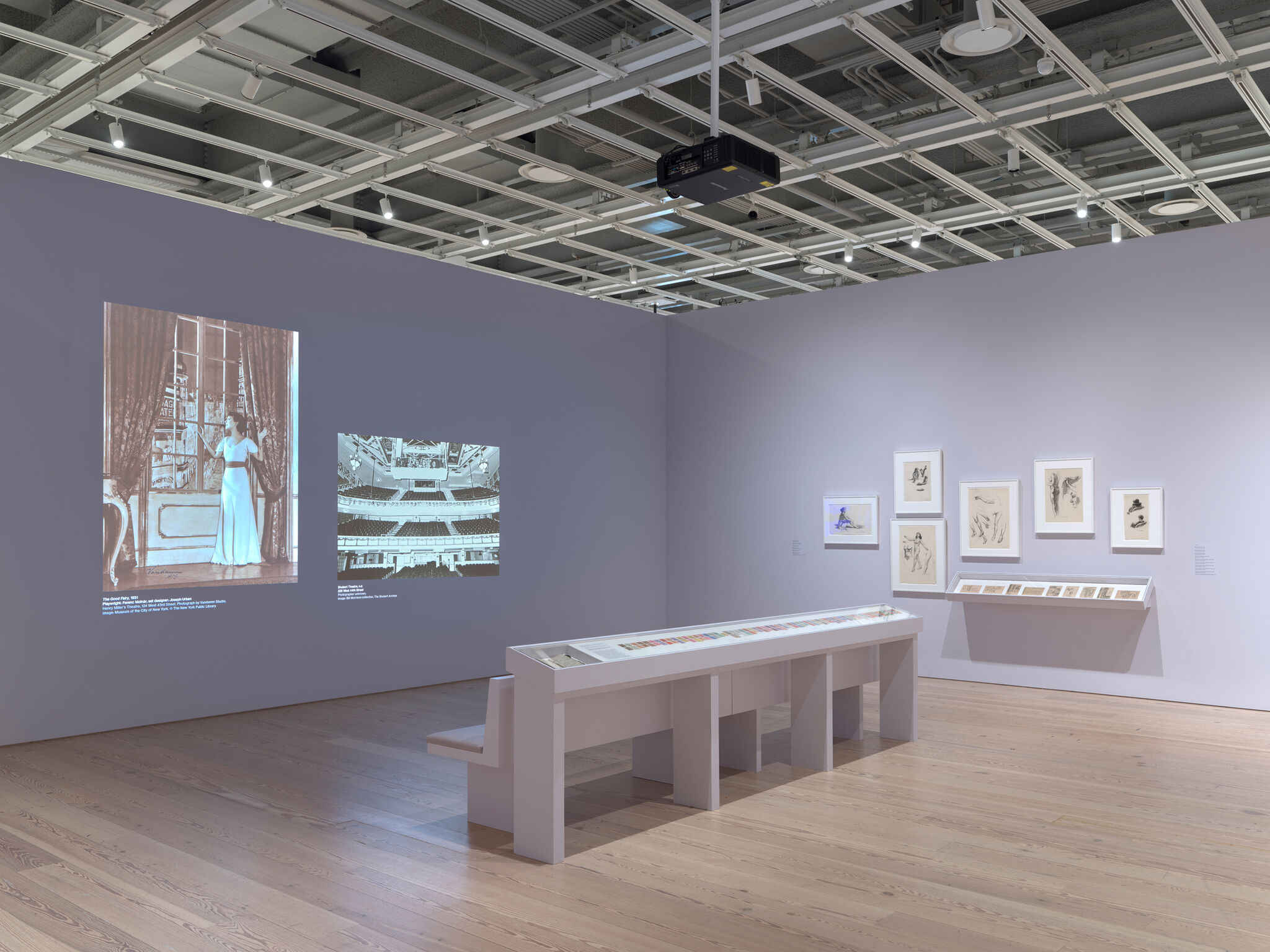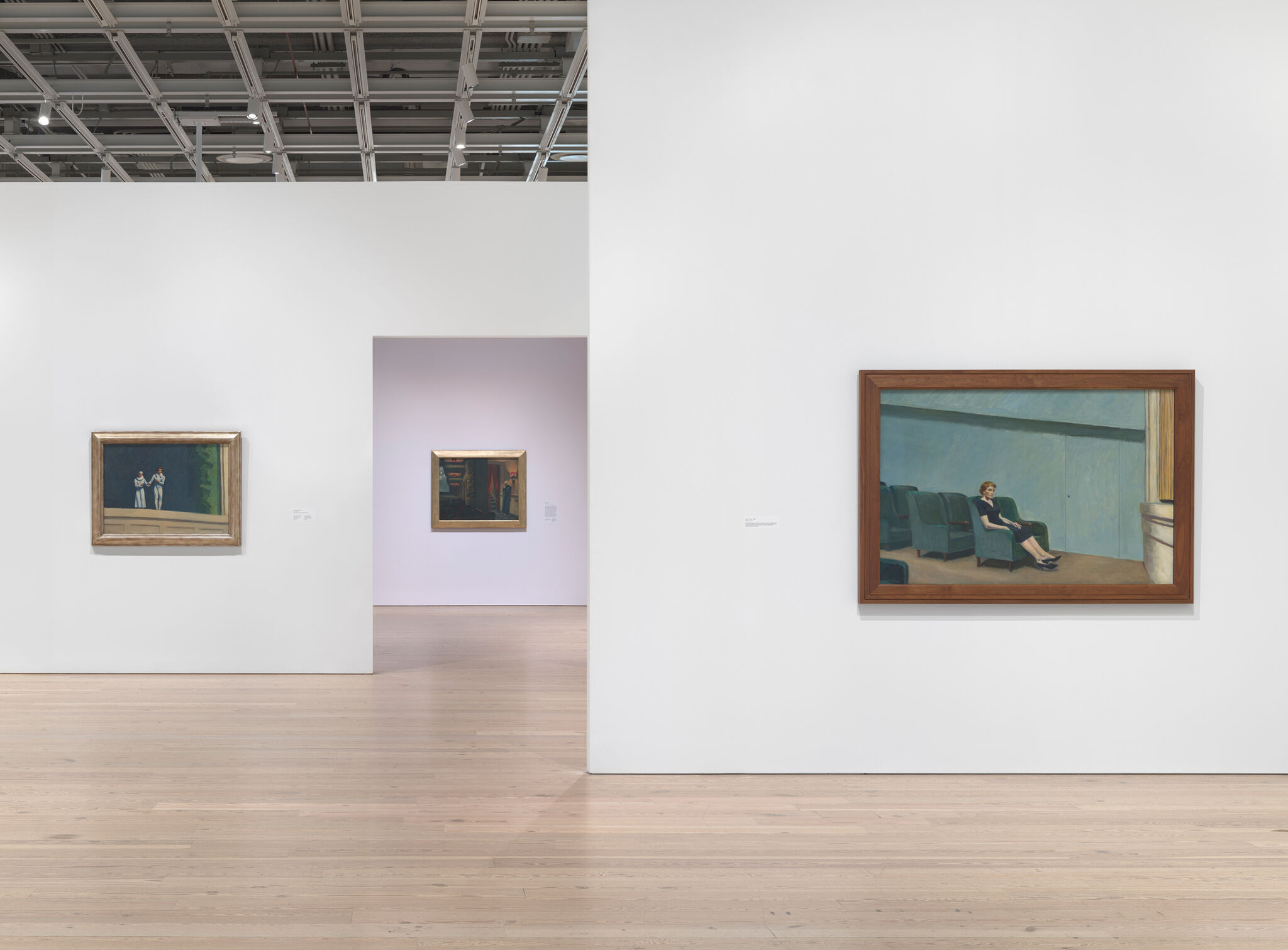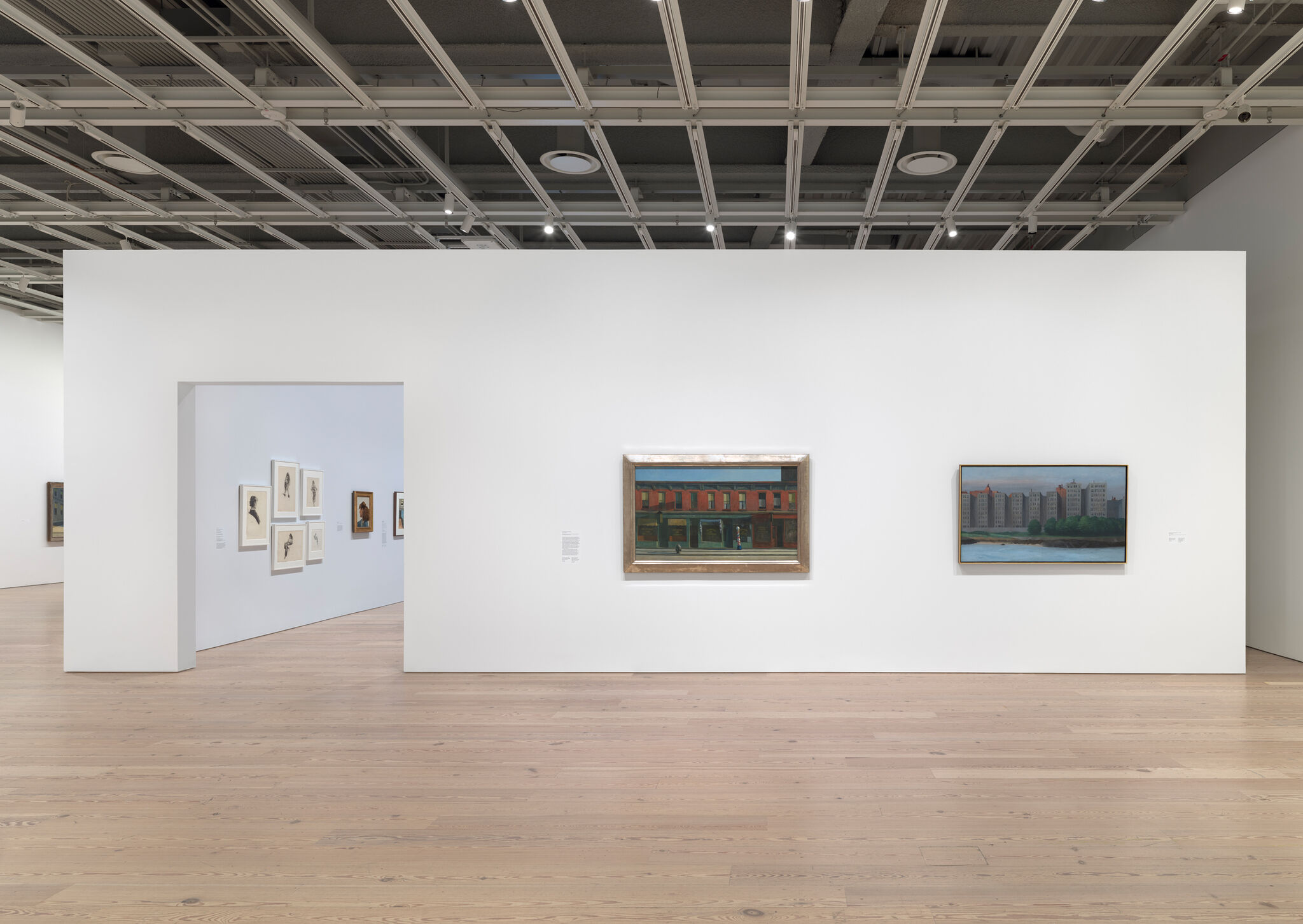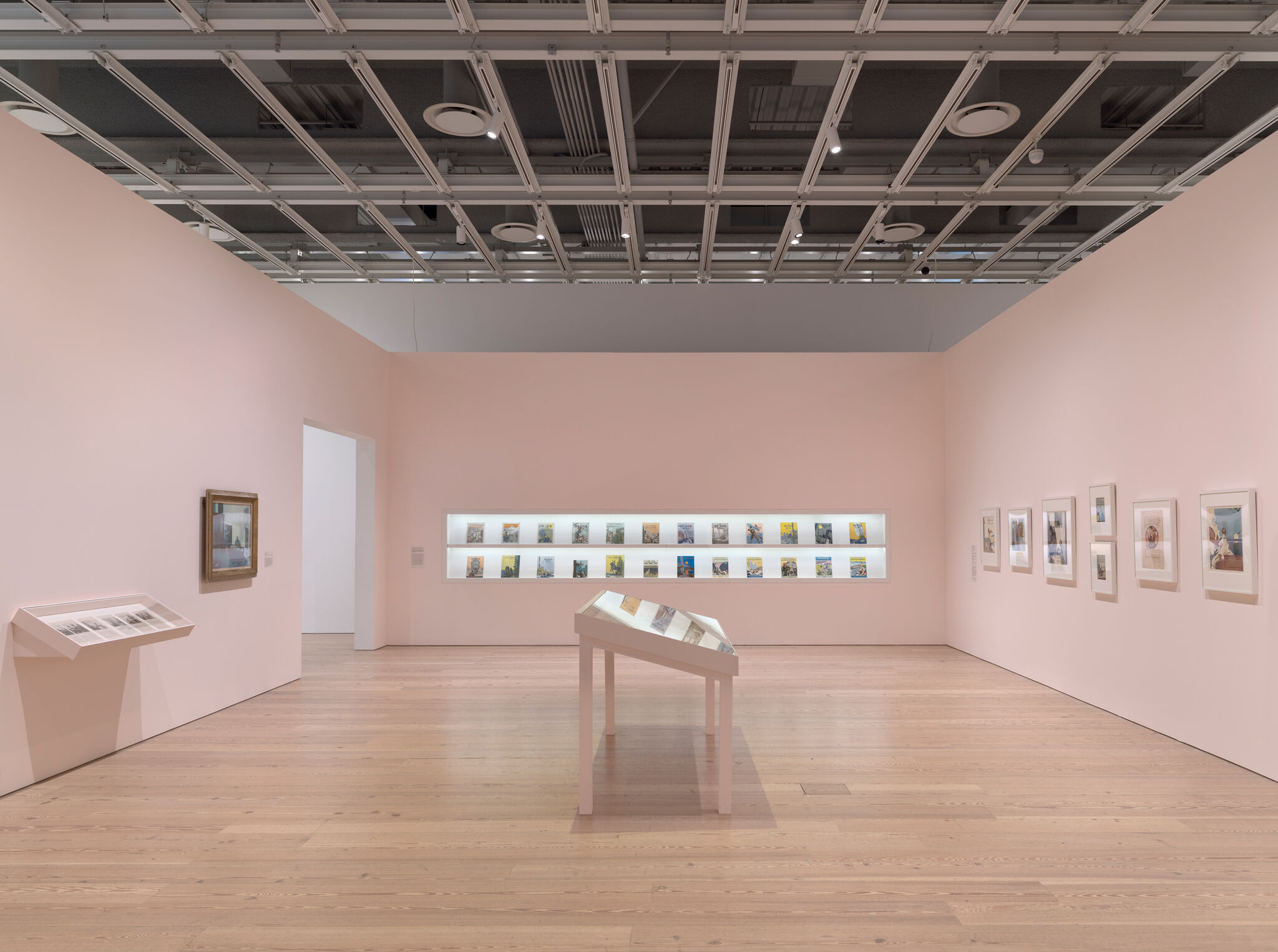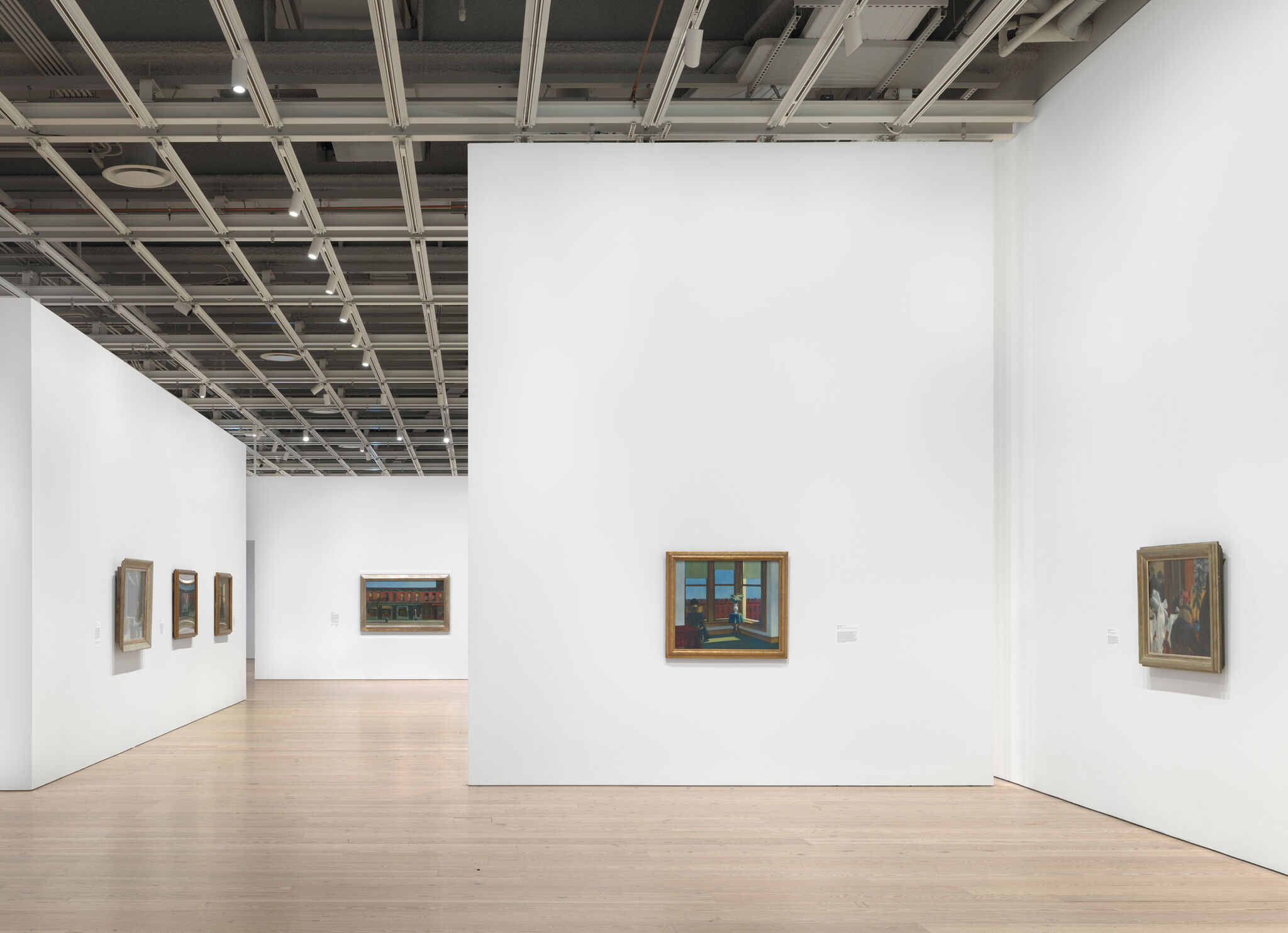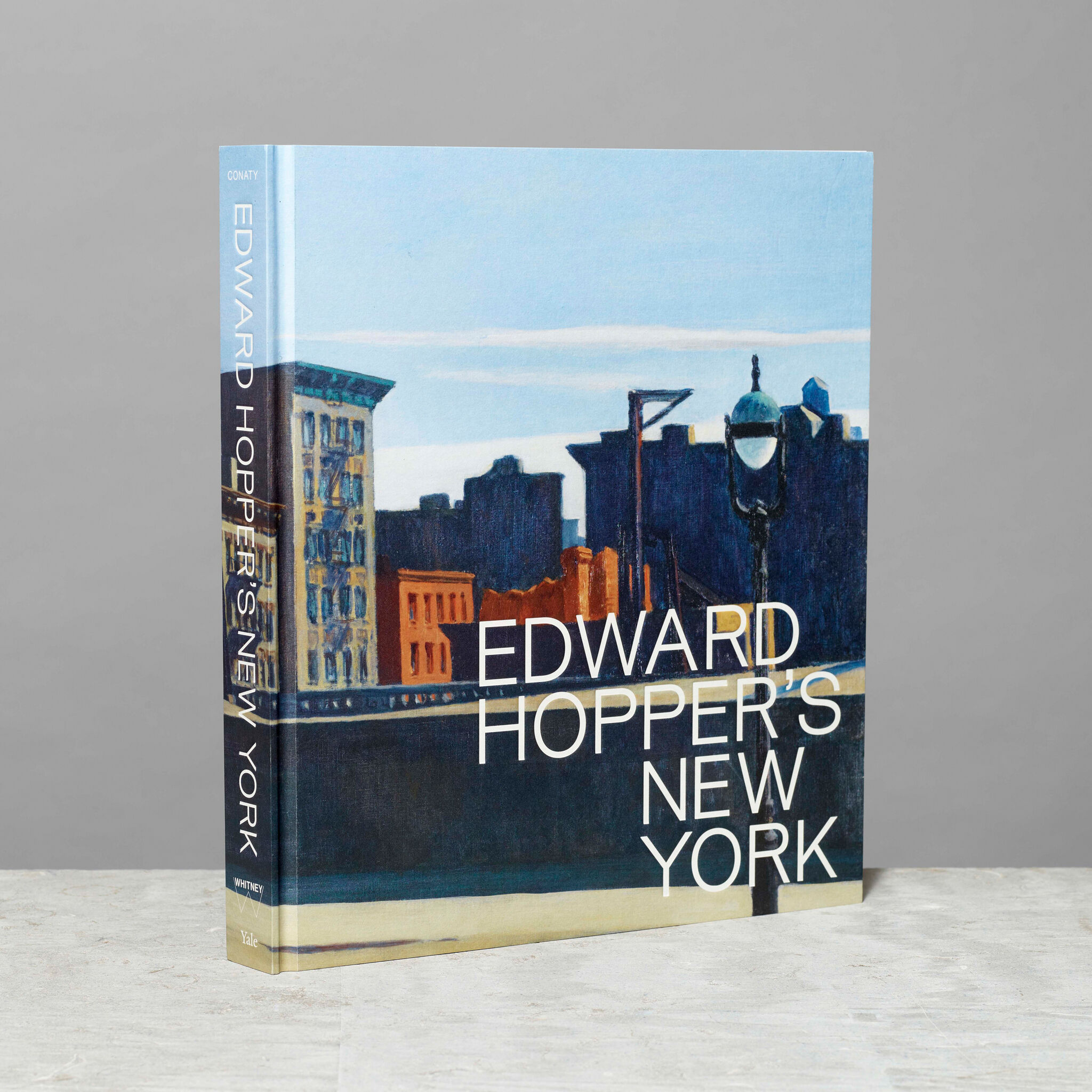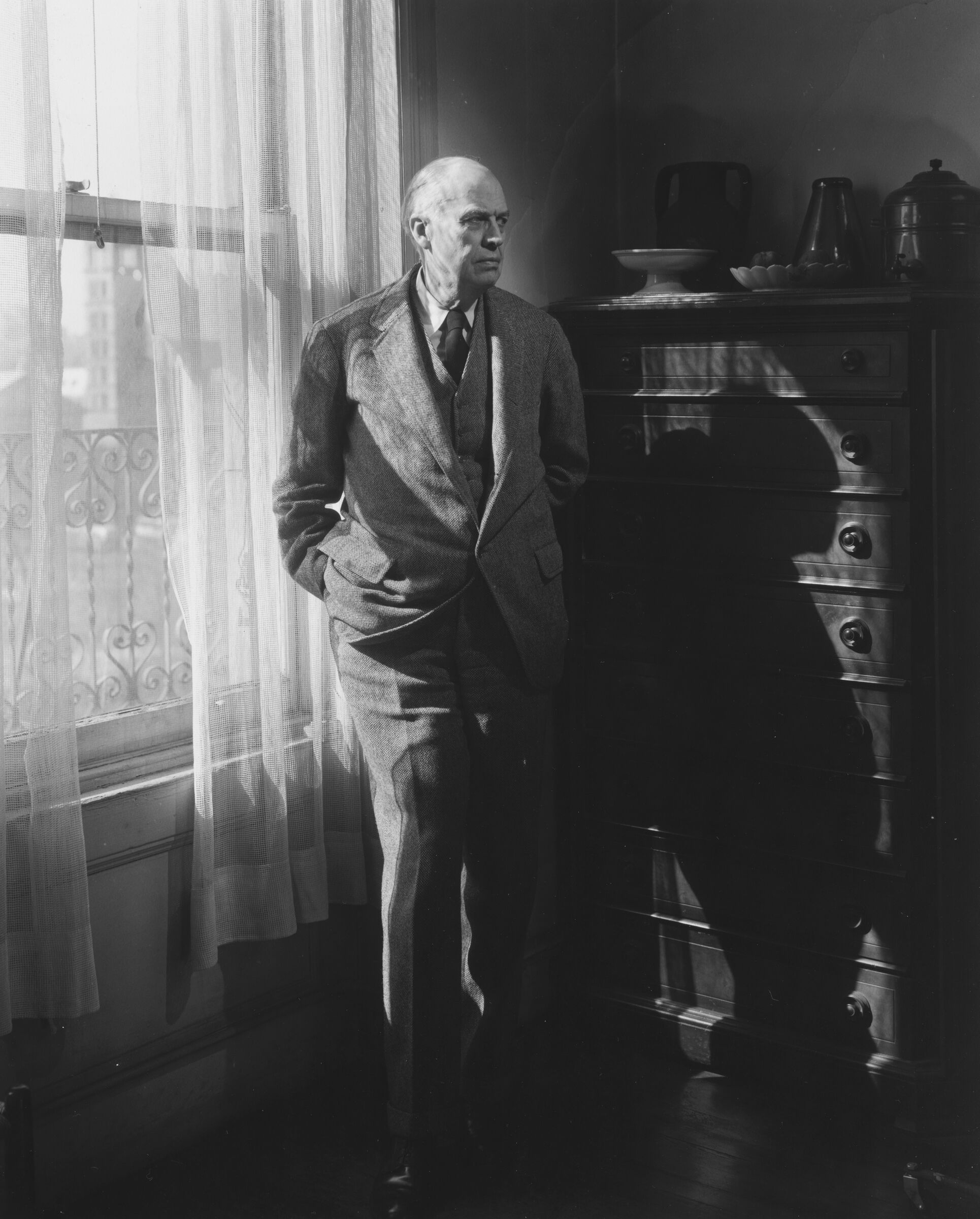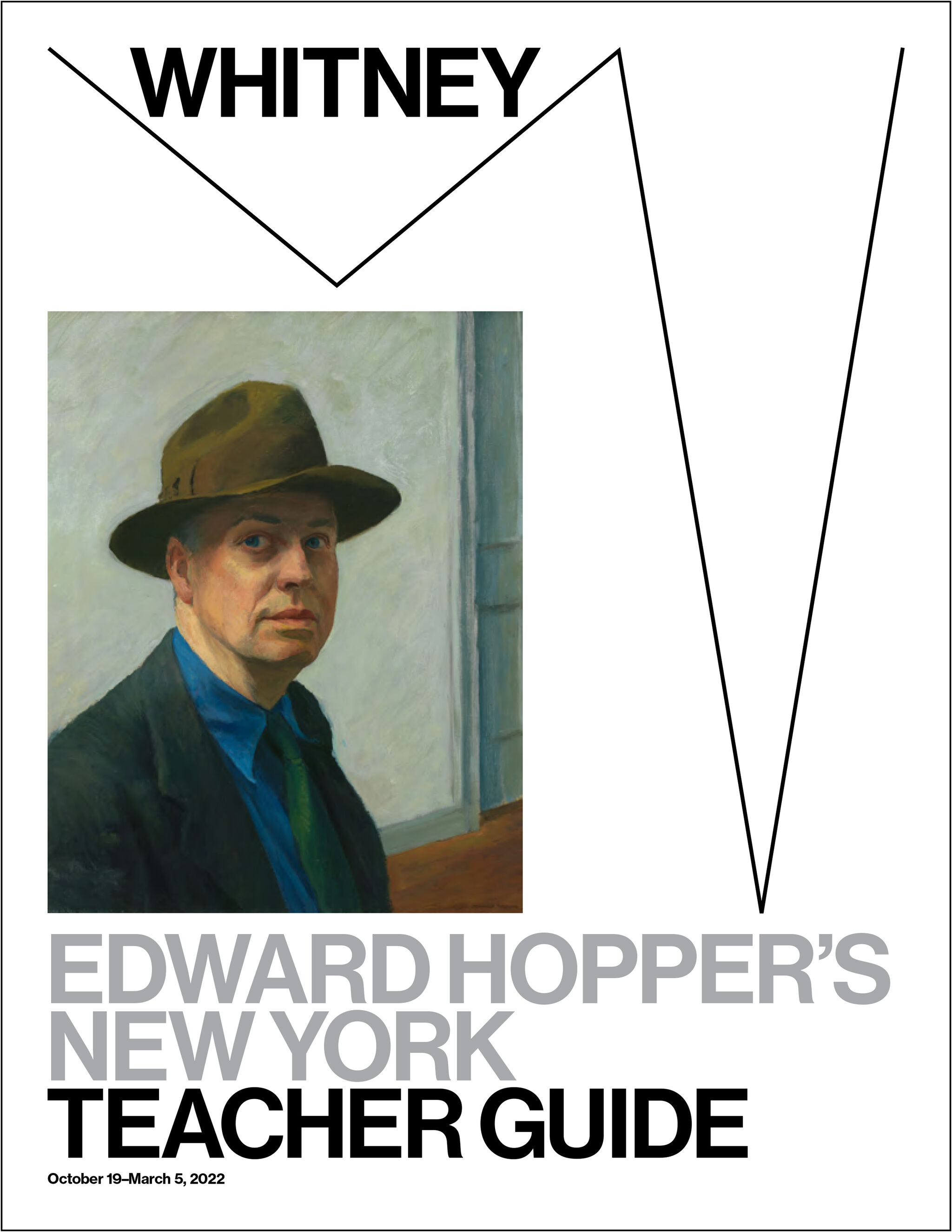Edward Hopper’s New York
Oct 19, 2022–Mar 5, 2023
Edward Hopper’s New York
For Edward Hopper, New York was a city that existed in the mind as well as on the map, a place that took shape through lived experience, memory, and the collective imagination. It was, he reflected late in life, “the American city that I know best and like most.”
The city of New York was Hopper’s home for nearly six decades (1908–67), a period that spans his entire mature career. Hopper’s New York was not an exacting portrait of the twentieth-century metropolis. During his lifetime, the city underwent tremendous development—skyscrapers reached record-breaking heights, construction sites roared across the five boroughs, and an increasingly diverse population boomed—yet his depictions of New York remained human-scale and largely unpopulated. Eschewing the city’s iconic skyline and picturesque landmarks, such as the Brooklyn Bridge and the Empire State Building, Hopper instead turned his attention to its unsung utilitarian structures and out-of-the-way corners, drawn to the awkward collisions of new and old, civic and residential, public and private that captured the paradoxes of the changing city. Edward Hopper’s New York charts the artist’s enduring fascination with the city, revealing a vision of New York that is as much a manifestation of Hopper himself as it is a record of the city around him.
Edward Hopper’s New York takes a comprehensive look at Hopper’s life and work, from his early impressions of New York in sketches, prints, and illustrations, to his late paintings, in which the city served as a backdrop for his evocative distillations of urban experience. Drawing from the Whitney’s extensive holdings and amplified by key loans, the exhibition brings together many of Hopper’s iconic city pictures as well as several lesser-known yet critically important examples. The presentation is significantly informed by a variety of materials from the Museum’s recently acquired Sanborn Hopper Archive—printed ephemera, correspondence, photographs, and journals that together inspire new insights into Hopper’s life in the city. By exploring the artist’s work through the lens of New York, the exhibition offers a fresh take on this formidable figure and considers the city itself as a lead actor.
This exhibition is organized by Kim Conaty, Steven and Ann Ames Curator of Drawings and Prints, with Melinda Lang, Senior Curatorial Assistant.
Edward Hopper's New York is sponsored by

This exhibition is also sponsored by


Generous support is provided by Judy Hart Angelo, Kenneth C. Griffin, and the Terra Foundation for American Art.
Major support is provided by the Barbara Haskell American Fellows Legacy Fund; David Bolger; The Brown Foundation, Inc., of Houston; the David Geffen Foundation; and Laurie M. Tisch.
Significant support is provided by Elizabeth Marsteller Gordon.
Additional support is provided by Ann Ames, Jane Carroll, Elissa and Edgar Cullman, the Daniel W. Dietrich II Foundation, and Arlene and Robert Kogod.

This exhibition is supported by an indemnity from the Federal Council on the Arts and the Humanities.
New York magazine is the exclusive media sponsor.
Resources
Access additional Edward and Josephine Hopper resources.
Events
View all-
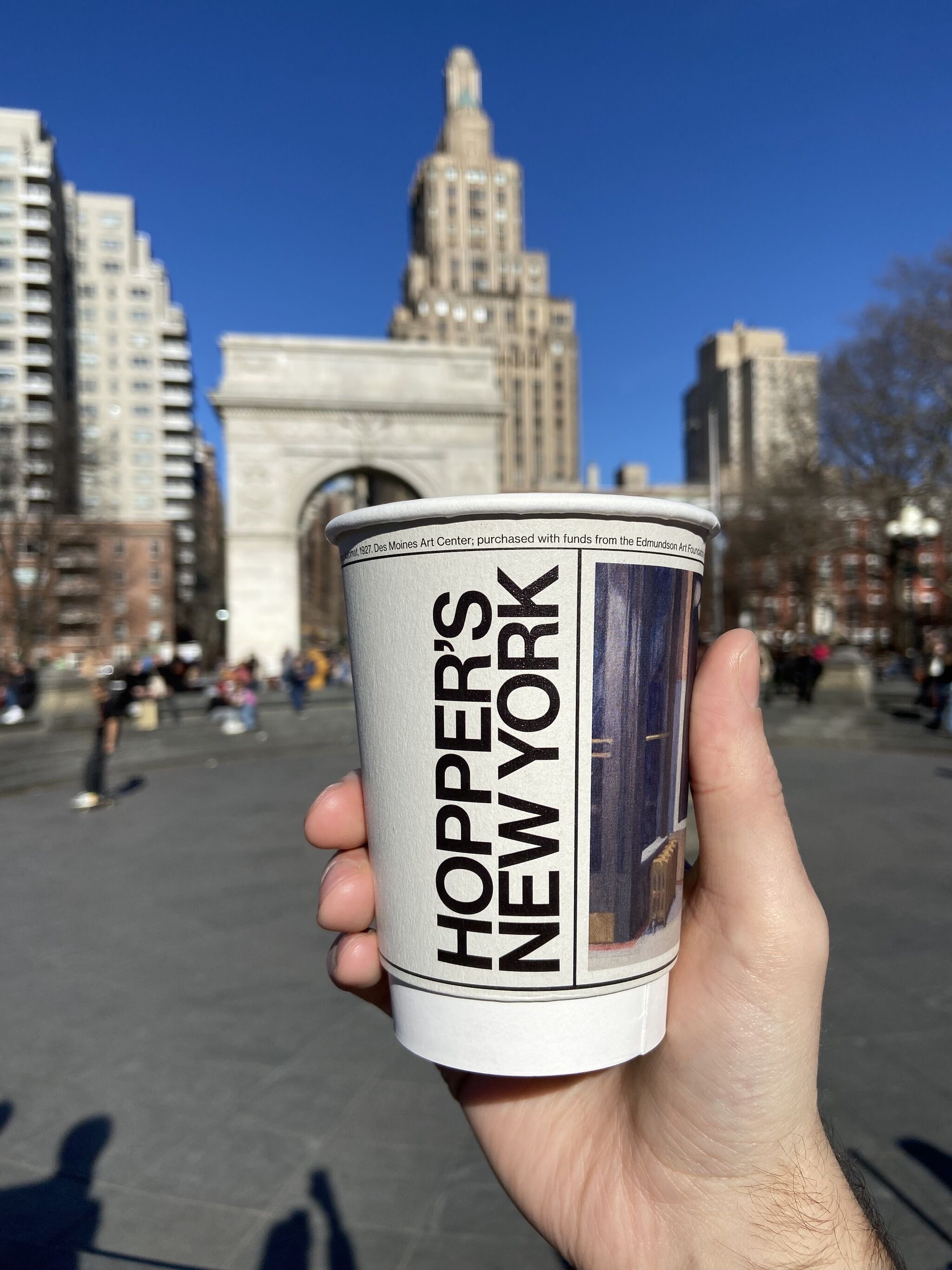
Free Coffee on the Whitney
Friday, February 17, 2023
10 am–4 pm -
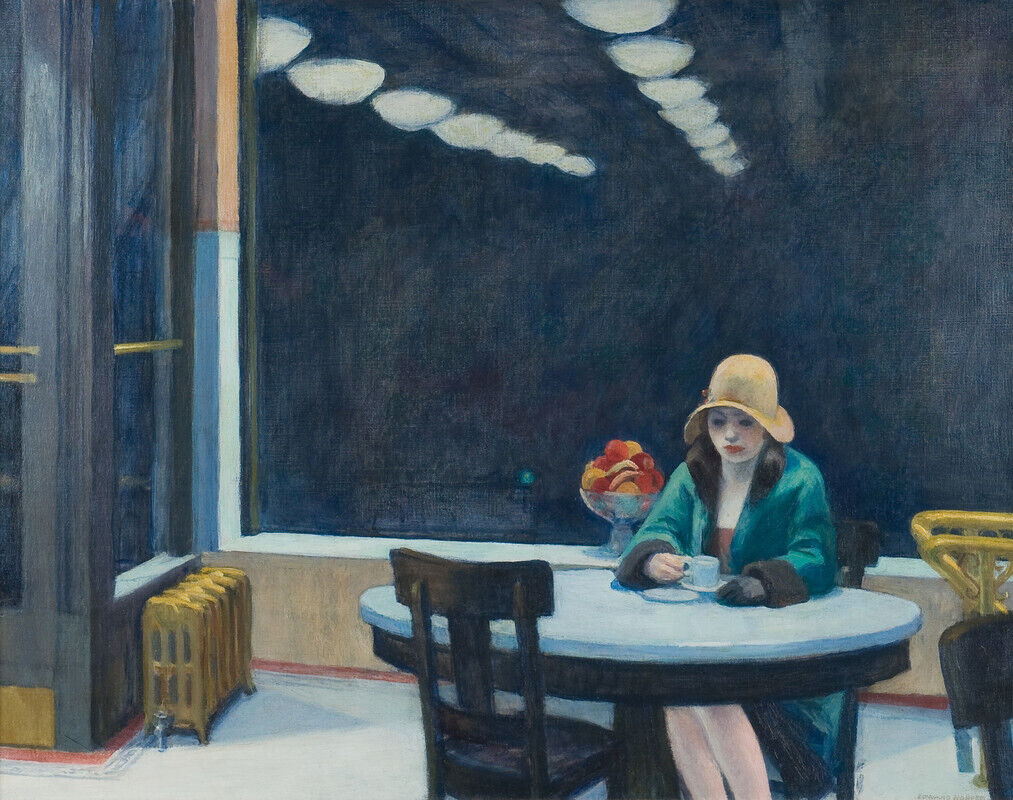
Saturated Places: Edward Hopper’s New York
Thursday, February 16, 2023
6–7 pm -
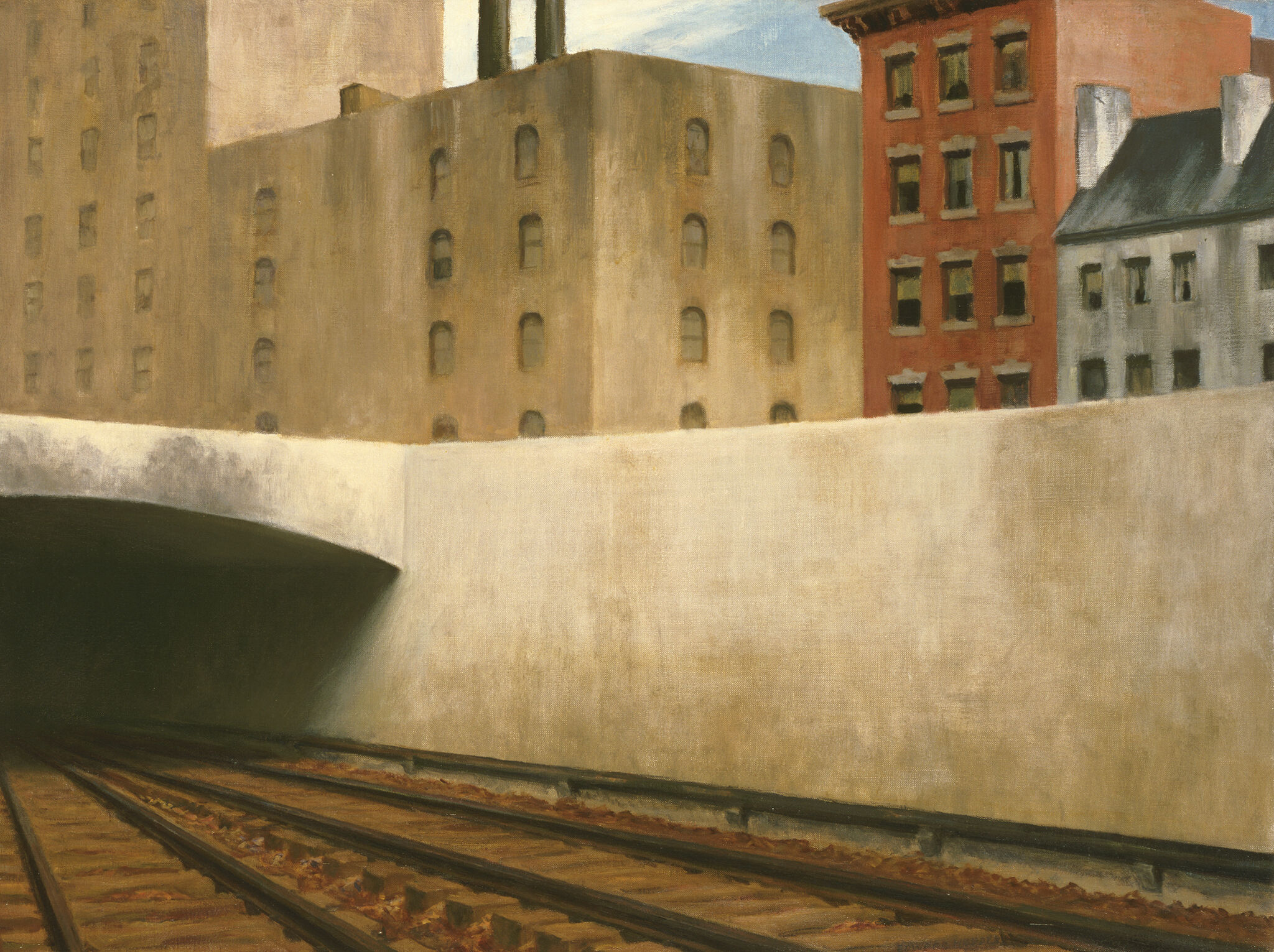
Approaching a City: Hopper’s Visions of Urban Space
Wednesday, February 15, 2023
7 pm -
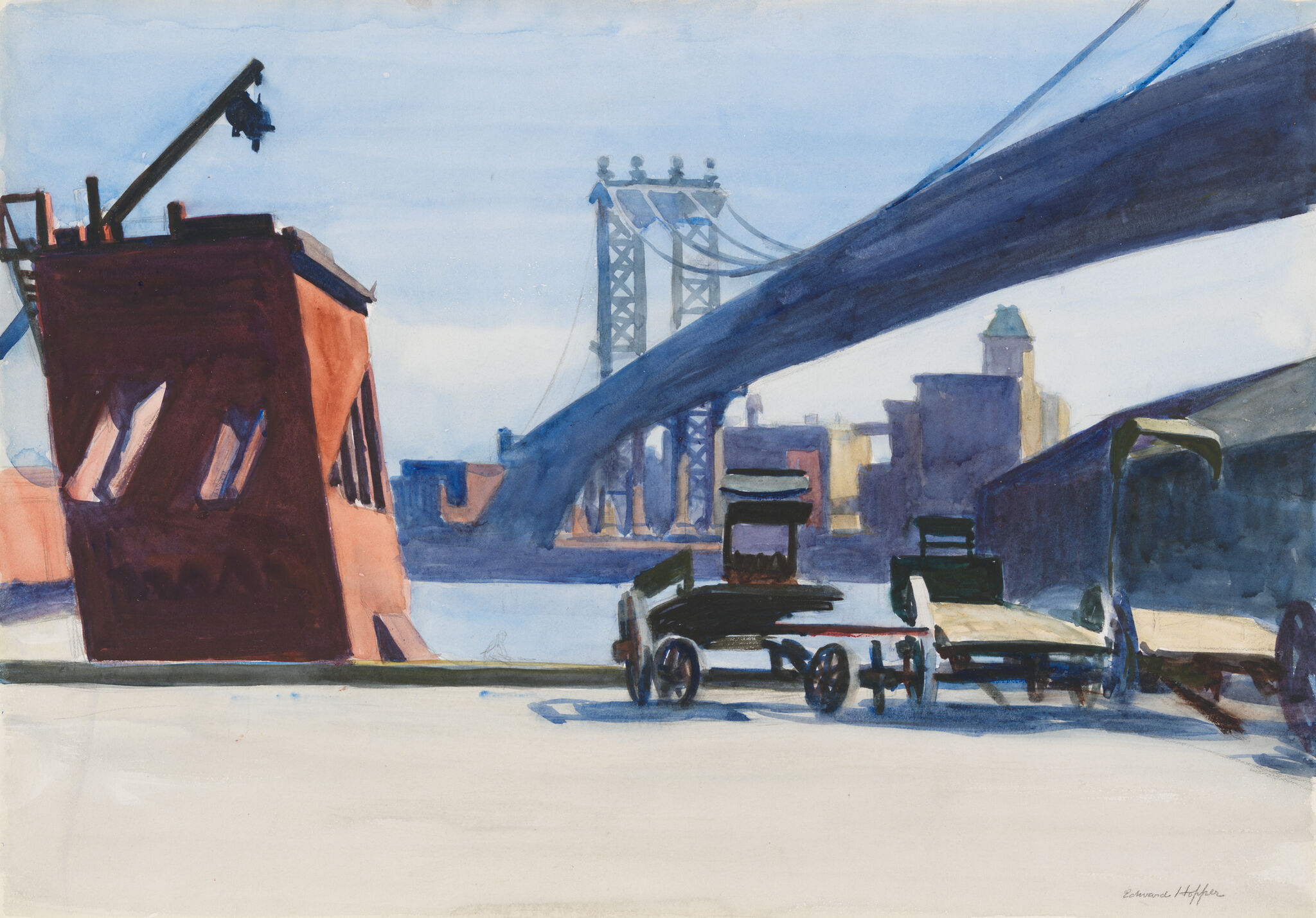
Verbal Description and Touch Tour: Edward Hopper’s New York
Friday, February 10, 2023
11 am–12:30 pm
Publication
Edward Hopper's New York
This engaging book delves into the iconic relationship between Edward Hopper (1882–1967) and New York City. This comprehensive look at an essential aspect of the revered American artist’s life reveals how Hopper’s experience of New York’s spaces, sensations, and architecture shaped his vision and served as a backdrop for his distillations of the urban experience. During sidewalk strolls and elevated train rides, Hopper sketched the city’s many windowed facades. Exterior views gave way to interior lives, forging one of Hopper’s defining preoccupations: the convergence of public and private. These permeable walls allowed Hopper to evoke the perplexing awareness of being alone in a crowd that is synonymous with modern urban life.
Drawing on the vast resources of the Whitney Museum of American Art, the largest repository of Hopper’s work, and the recently acquired gift of the Sanborn Hopper Archive, this book features more than 300 illustrations and fresh insight from authoritative and emerging scholars.
In the News
“…this is Hopper’s New York, emphasis on the possessive, and for all its crowd-pleasing fare this is a more challenging show about his dominion over the city.” —New York Times
“Curated with great intelligence and care by Kim Conaty, “Edward Hopper’s New York” is a terrific show based on a great idea, and it’s weird that no one thought to approach his work in this way before.” —The New Yorker
“But as a startling and immaculate show at the Whitney Museum of American Art makes clear, some of Hopper’s most gothic allegories of disconnection and loneliness were set in the perpetually raucous metropolis.” —Financial Times
“…a celebration of the city and the master who co-exist and reveal the immortality of New York.” —Forbes
“The show succeeds at revealing a different side of Hopper, eschewing many of the artist’s most famous paintings in favor of ones that cultivate a sense of him as a New Yorker and an artistic innovator.” —The Guardian
“…the artist shows us urban dreamers but keeps their thoughts private.” —Wall Street Journal
“…the diverse selection of works encourages us to do away with clichés and consider that Hopper’s vision of the city was as varied and complex as the man himself.” —The Art Newspaper
“…captures a lifelong love that shifted with the city itself, sometimes uncomfortably, but never grew stale.” —The Boston Globe
“…a dynamic mix of artworks and archival materials that tell the story of Hopper’s life and work in New York City…” —Artnet
“It’s a chance to see how one New Yorker saw our city evolve over almost six decades.” —NY1
“One of the joys of this Whitney show is the many preparatory sketches on display.” —The Village Voice
“...the first exhibition to take an in-depth look at the painter’s relationship with New York City, where he lived for six decades.” —PIX11
“Edward Hopper's New York features about 200 works that capture a changing and changeless city, and illuminate the inner lives of city dwellers.” —CBS Sunday Morning
“...the Hopper exhibition is perfectly on brand: an invitation to New Yorkers, past, present and future, to navel-gaze and ponder the enigma of why the greatest city in the world is both the cause and cure of loneliness.” —The Washington Post
“…Hopper’s strongest works are invigorated by tension between an apparent naturalism and lucid structure and an implied, enigmatic—rather than overt—narrative..” —The Wall Street Journal
“What Hopper discovered was that when the people are gone, the buildings come to life.” —New York Review of Books
“Stillness at the threshold of movement is a crucial feature in the illusionistic dramaturgy of Hopper’s work.” —Artforum
“Rarely does a museum so effectively recalibrate the public’s understanding of a non-living artist.” —The Art Newspaper

